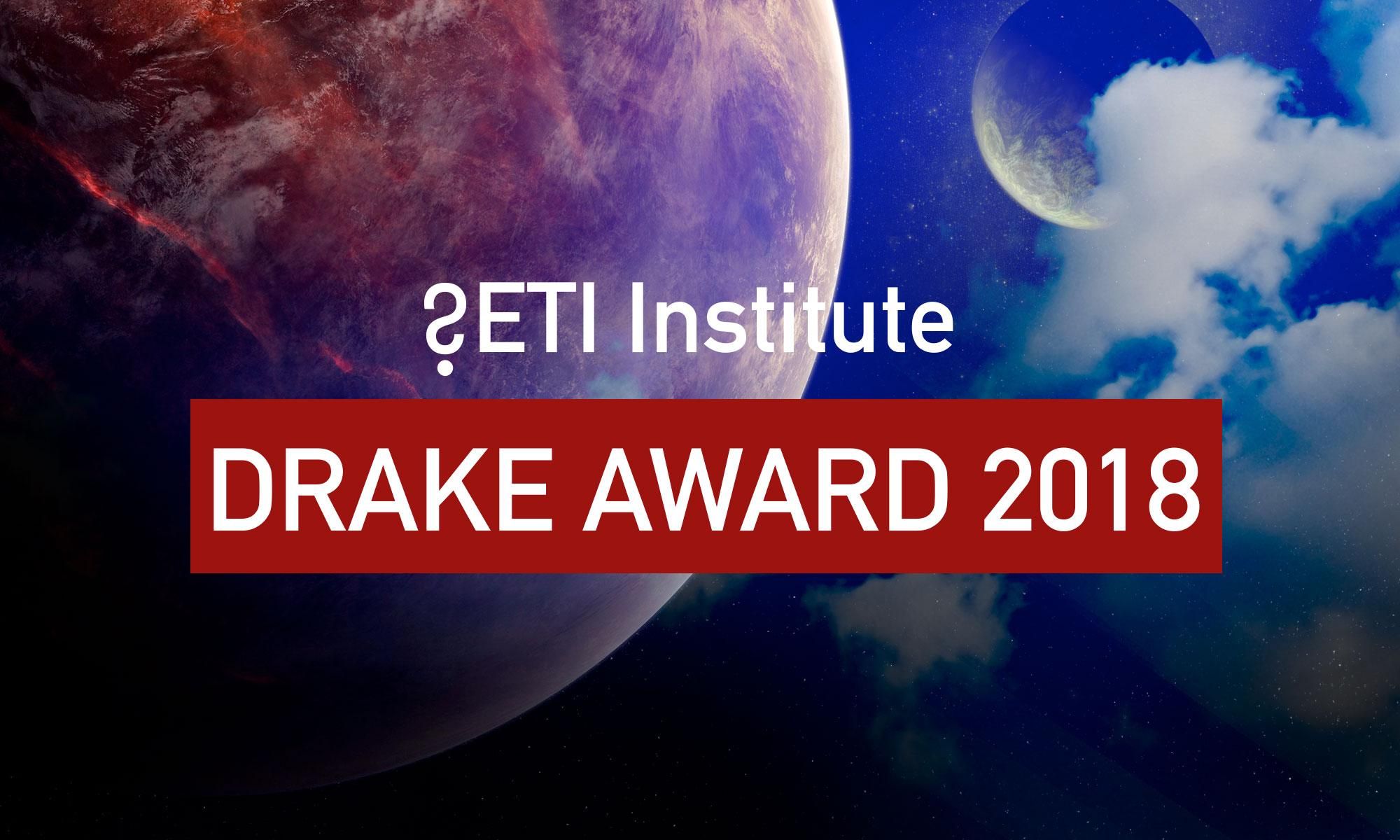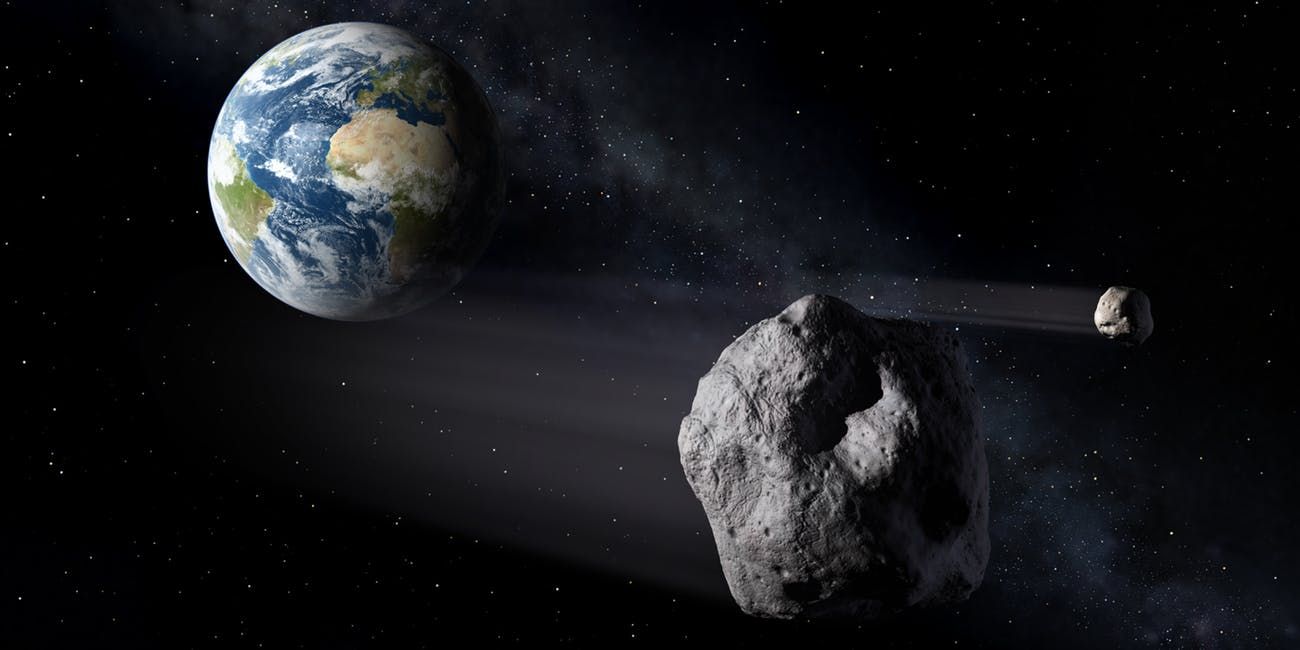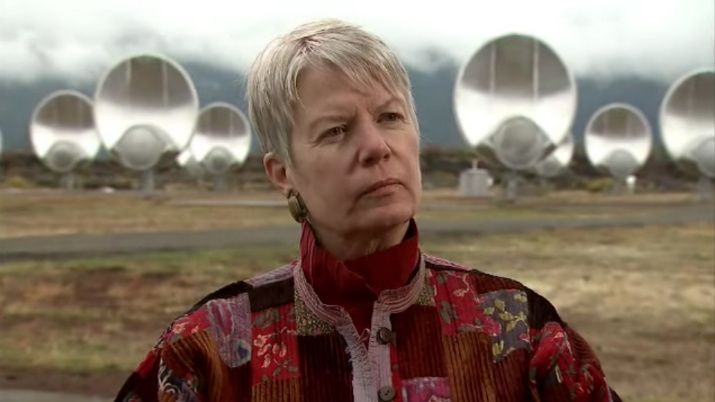Do We Need a Special Language to Talk to Extraterrestrials?
Listen to “e166 Do We Need a Special Language to Talk to Extraterrestrials?” on Spreaker.
November 5, 2019 (wired.com)
• In May 2018, from a radar facility in Tromsø, Norway, ‘Sónar Calling’ trained its antennas on a potentially habitable exoplanet located 12 light years from Earth called GJ237b. Sónar Calling is an interstellar messaging project by the nonprofit METI International, or ‘Messaging Extraterrestrial Intelligence’ which began in 2017 (as the sister organization to SETI, the Search for Extraterrestrial Intelligence).
• The Sónar Calling messaging project has sent two transmissions to potential cosmic cousins. Both messages, each sent over the course of three days, have consisted of a selection of short songs and a primer on how to interpret the contents. The second broadcast was notable for sending an extraterrestrial language devised by physicists Yvan Dutil and Stephane Dumas in the late 1990s.
• Dutil and Dumas’ “language” is based on a communication system known as “Lincos”, a mathematical format developed by Dutch mathematician Hans Freudenthal in 1960. The ‘primer’ begins by introducing ET to numerals and basic arithmetic, and then progresses to more complex topics like human biology and the planets in our solar system. This mathematical language has been sent into space twice before in 1999 and 2003.
• Many mathematicians believe that math is a constant in the fabric of reality. Math isn’t something that humans created so much as it is something that the human mind discovered. Still, Lincos rests on the assumption that an ET is “human-like in its mental state”. If ET does in fact think like a human, does that alien also have some kind of human-like language? Early artificial intelligence researcher Marvin Minsky argues that ET is likely to have language because language is an ideal solution to fundamental problems faced by any intelligent species including constraints on time, energy, and resources.
• A deeper question is whether ET’s language will be similar to our own. Noam Chomsky has argued that universal grammar is a structure common to all human languages on earth. Brain imaging studies have shown that the structure of human language manifests in our neural brain activity. So if extraterrestrials do have a language similar to earth languages, it might imply that they also have a functionally equivalent neurobiology.
• Astrobiologist Charles Cockell compares the likelihood of biological similarities between humans and extraterrestrial beings with the similarities between humans and other animals here in earth. Cellular life arises from the same four nucleotides to create the structure of an eye or a wing. Universal biological similarities puts constraints on the trajectory of evolution tempered with adaptations to conditions on their home world. It is therefore reasonable to assume that extraterrestrial evolution might arrive at similar solutions to common issues, such as evolving a brain capable of recursive languages.
• If that’s the case, then the best way to communicate may not be designing artificial languages, but sending ET a set of encyclopedias. If ET has developed its own artificial intelligence, it could potentially decipher the structure of a natural language message. Aliens will still need some kind of language to connect some language symbols to their meaning. But as on earth, the best way to start an interstellar conversation might simply be by saying “hello.”
• [Editor’s Note] A lot of assumptions were made to get to the theory that extraterrestrial beings may have similar language skills, and therefore similar neurobiology as humans on earth. This strikes me as a lot of scientific gibberish meant to assure the average mind-controlled human that smart scientists are working day and night to unlock the mystery of whether there may be other intelligent extraterrestrial life in the universe. What other organization commonly uses this modality…. hmmm… oh yes! SETI. This sounds a lot like what SETI does to make people believe they are earnestly searching for extraterrestrial intelligence, when they and their Deep State handlers know for a fact that intelligent extraterrestrials exist all around us and regularly interact with our elite. According to these ‘deep thinkers’, a major obstacle is how we might communicate with these advanced beings. Have they ever heard of telepathy which requires no spoken language, and which virtually everyone who has had an encounter with an alien being has reported?
In May 2018, a radar facility in Tromsø, Norway, trained its antennas on GJ237b, a potentially habitable exoplanet located 12 light years from Earth. Over the course of three days, the radar broadcast a message toward the planet in the hopes that there might be something, or someone, there to receive it. Each message consisted of a selection of short songs and a primer on how to interpret the contents.


This was the second iteration of Sónar Calling GJ273b, an interstellar messaging project by the nonprofit METI International that began in 2017. Although both transmissions were billed as a “music lesson for aliens,” the second broadcast was notable for rehabilitating an extraterrestrial language developed by the physicists Yvan Dutil and Stephane Dumas in the late 1990s.
This custom symbolic system begins by introducing ET to numerals, and then progresses to more complex topics like human biology and the planets in our solar system. An earlier version of the language was first sent into space in 1999 and again in 2003 as part of the Cosmic Call messages—a crowd-sourced interstellar messaging project that marked the first serious attempt at interstellar communication since Carl Sagan and Frank Drake sent the Arecibo message into space 25 years earlier.
All of these formal messaging attempts have taken basically the same approach: Teach numerals and basic arithmetic first. But as some recent insights in neurolinguistics suggest, it might not be the best way to greet our alien neighbors.

The world’s first interstellar communication system, the lingua cosmica, or Lincos, set the tone for all subsequent attempts by placing

basic math at its core. Designed by the Dutch mathematician Hans Freudenthal in 1960, Lincos inspired several other mathematicians and scientists to try their hand at designing extraterrestrial languages. Each system is ultimately an attempt at solving a remarkably complex problem: How do you communicate with an intelligent entity you know nothing about?
The question gets at the nature of intelligence itself. Humans are the only species on Earth endowed with advanced mathematical ability and a fully fledged faculty of language, but are these hallmarks of intelligence or human idiosyncrasies? Is there an aspect of intelligence that is truly universal?
Scientists and mathematicians have grappled with these questions for centuries. As the Nobel laureate Eugene Wigner once observed, mathematics is “unreasonably effective” at describing the natural universe, which has led a significant contingent of mathematicians to conclude that math is baked into the fabric of reality. From this perspective, mathematics isn’t something produced by the human mind so much as something the human mind discovers.
Most interstellar communication systems were designed around this conclusion. The goal isn’t to teach ETs about addition and subtraction—presumably they know as much if they can build a telescope to receive the message. Instead, these systems teach ETs about the way we code numbers as symbols. Then they can build up to more complex ideas.
It’s an elegant solution to a difficult problem, but Lincos still rests on the assumption that an ET is “human-like in its mental state,” as Freudenthal once conceded. But if ET does in fact think like a human, does that alien also have some kind of human-like language?
FAIR USE NOTICE: This page contains copyrighted material the use of which has not been specifically authorized by the copyright owner. ExoNews.org distributes this material for the purpose of news reporting, educational research, comment and criticism, constituting Fair Use under 17 U.S.C § 107. Please contact the Editor at ExoNews with any copyright issue.

















